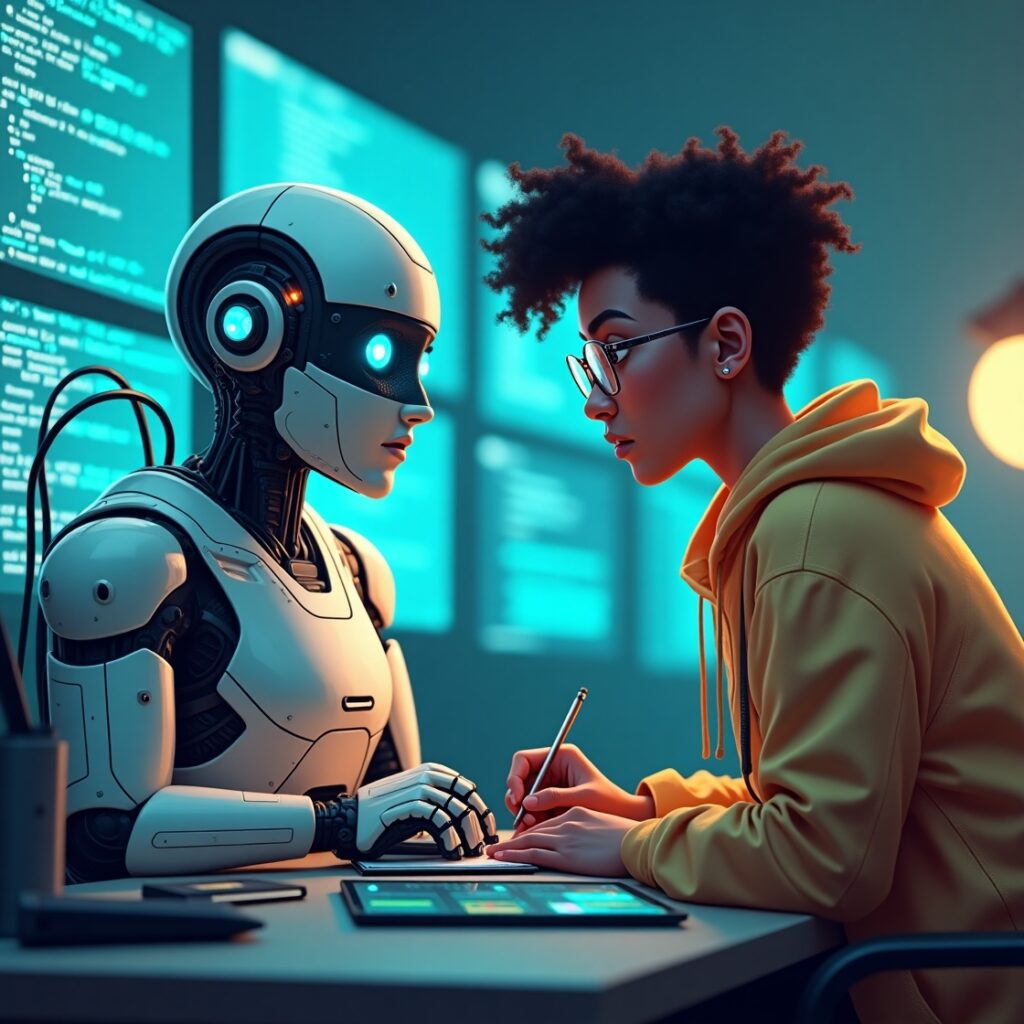AI & Graphic Design: Friend or Foe?

Artificial Intelligence (AI) is changing the way we live, work, and create. In the world of graphic design, it’s shaking things up—automating tasks, generating images, and even suggesting layouts. But should designers be worried? Or is AI actually a powerful creative partner?
Let’s dive into how AI is impacting the design industry—and what it means for you as a designer or client.
What AI Can Do in Graphic Design
AI tools are increasingly capable of handling certain design-related tasks, such as:
Generating images and artwork (e.g., Midjourney, DALL·E)
Creating logos or templates based on user input (e.g., Looka, Canva’s Magic Design)
Photo editing and background removal
Suggesting layouts or design variations
Automating repetitive tasks (like resizing assets for different platforms)
These tools are fast, scalable, and often inexpensive—which makes them especially appealing to small businesses or non-designers.
What AI Can’t Replace
While AI is impressive, it has limits. It can’t replace:
Human creativity and originality
AI creates based on existing data—it can’t invent truly new ideas like a human can.Emotional intelligence and storytelling
Great design isn’t just visually appealing—it’s strategic, thoughtful, and emotionally resonant. AI can mimic aesthetics, but not intention.Brand consistency and long-term strategy
A real designer understands your business, your goals, and your audience. AI doesn’t.Collaboration and feedback
Designers collaborate, iterate, and improve. AI can’t have a conversation or respond to critique with empathy.
The Smart Way to Use AI as a Designer
Instead of viewing AI as a threat, think of it as a creative assistant. Here’s how designers are using AI wisely:
Rapid prototyping: Use AI to quickly generate variations or mockups for brainstorming.
Speeding up production: Automate tasks like cropping, resizing, and background removal.
Enhancing creativity: Use AI-generated imagery as inspiration—not the final product.
Client education: Help clients understand when AI tools are useful—and when custom design is necessary.
Real-World Example: AI + Designer = Better Results
Let’s say a client needs a hero image for a website. You could use AI to generate visual ideas based on a few prompts—saving time on stock image searches or initial sketches. Then, you refine the concept, adjust the layout, and add brand elements to make it fully aligned with the client’s identity.
In this case, AI accelerates the process, but the designer elevates the result.
The Future of Design
AI will continue to evolve, and designers who embrace it as a tool—not a replacement—will thrive. The future isn’t about choosing between human and machine. It’s about combining the strengths of both.
Designers who understand branding, strategy, and human emotion will always be in demand. AI might do the heavy lifting, but humans provide the soul.
Final Thoughts
AI is here to stay—but so is the need for thoughtful, human-centered design. The best work will come from designers who learn how to use these tools to enhance their creativity, not replace it.
Want to work with a designer who uses the latest tools—but still puts human insight first? [Let’s talk about your project].
Akheel Ep
I'm a graphic designer with a passion for visual storytelling, branding, and clean, impactful design. This blog is where I share inspiration, tips, and behind-the-scenes of my creative process. Let's bring ideas to life—one pixel at a time.
- Akheel Ep#molongui-disabled-link

